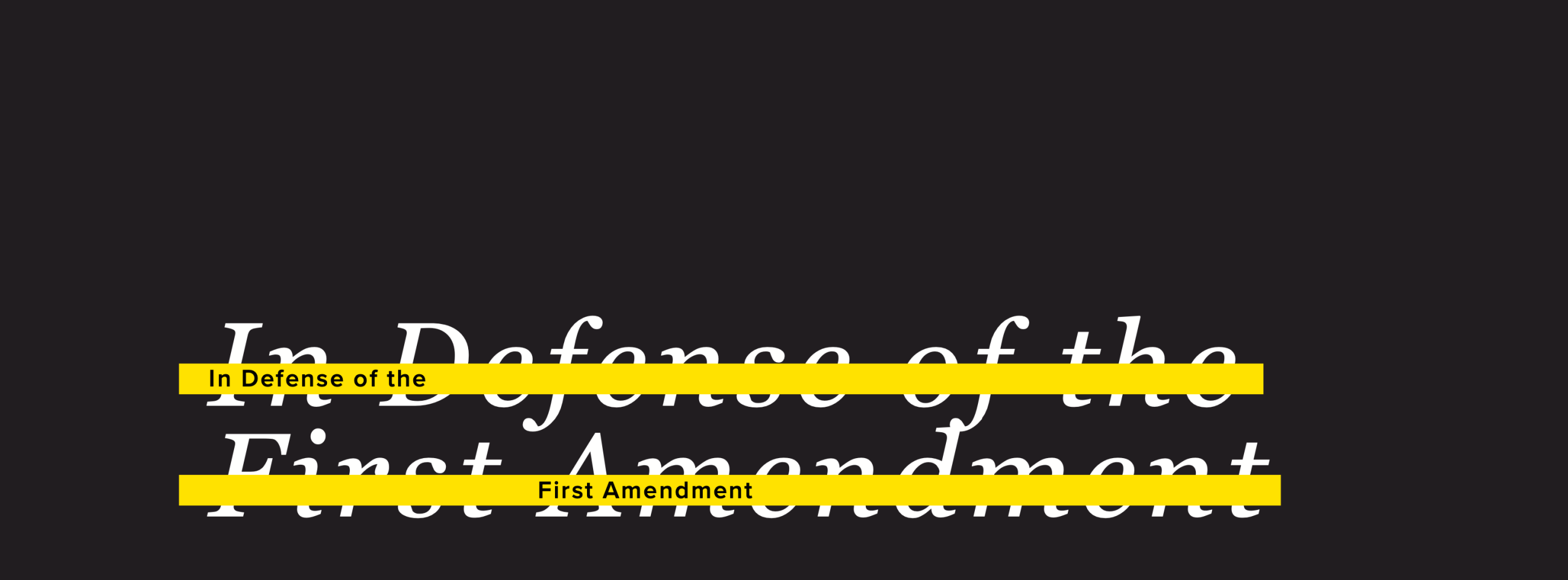In the 20th century, news organizations played a major role in protecting the press and speech freedoms enshrined by the First Amendment to the U.S. Constitution. They went to the nation’s highest courts to fight for government documents, report fully on public figures, fight censorship and protect confidential sources. Their efforts helped to shape American laws on libel, privacy, prior restraint and many other legal principles. In the latter half of the 20th century, daily newspapers in particular paid hefty legal bills to fight for—and in some cases expand—speech and press rights.
In the past decade, however, economic pressures on traditional news companies appear to have diminished their capacity to engage in legal activity. What’s more, the digital-age technologies that upended legacy media economics also have complicated First Amendment law. Today, Americans can carry a megaphone, a printing press, a protest march, a petition or even a virtual church in their pockets. We can exercise each of our First Amendment rights within a smartphone. These devices, and the electronic systems that make them possible, do not slide easily into existing law.
To better understand how newspapers are responding to the changing economic and legal environment, the John S. and James L. Knight Foundation, American Society of News Editors (ASNE), Associated Press Media Editors (APME) and Reporters Committee for Freedom of the Press surveyed top editors nationwide. Late last year, we used an online poll to get a broad sense of their perceptions around these issues. The survey was not a scientific, representative sample, but was instead a cross-section of editors from ASNE and APME—two leading news associations. We wanted to know if, in the digital age, leading newspapers were still taking on First Amendment challenges. The survey solicited responses from ASNE and APME members because they are more likely to contain the news leaders who would spearhead such legal challenges. All respondents were top editors, disproportionately representative of larger print and online publications, who witness firsthand the tensions between reporting the news and adhering to the law.
Among the key findings:
Editors say the news industry is less able to go to court:
News leaders are not sanguine about their industry’s capacity to police and protect the First Amendment. Nearly two-thirds 65% of the editors who responded reported that the news industry is weaker in its ability to pursue legal activity around First Amendment-related issues than it was 10 years ago. Many of the news leaders surveyed said this was happening at their own organizations. A majority 53% agreed with the statement that “News organizations are no longer prepared to go to court to preserve First Amendment freedoms.”
Money cited as key reason:
Editors see economic pressures as a key piece of the puzzle. When those who had described the industry as less able to go to court were asked the reason for diminished capability, an overwhelming 89% cited money. More than a quarter 27% of the editors noted cases at their own news organizations that could have been pursued but were not.
Many unsettled questions in the digital age:
There was clear consensus that the digital age has brought new challenges to press freedom, but few ways of addressing them. When offered a series of statements around the state of First Amendment law in the digital era, most news leaders said the law was behind the times. A majority 59% disagreed with the statement that “First Amendment law is largely settled,” and nearly 9 in 10 88% agreed with the statement that “In the digital age, there are many unsettled legal questions about the scope of free expression.” A strong majority 71% agreed with the statement that “First Amendment law has not kept up with technological developments.”
Editors perceive loss in ability to pursue proactive cases:
While the overall rate of legal activity is a mixed picture compared to 10 years ago, editors do perceive a decline in proactive cases— those in which a news organization is going on “offense,” such as suing to open up access to information. A majority 65% of the news leaders said their organizations were engaged in activity related to a lawsuit—in court or settlement—in 2014 and 2015. At some news organizations, this is a smaller share than it was a decade ago, but at others it is the same or more. Larger newsrooms are still more likely to go to court over First Amendment issues. And, in general, editors did not see any major change in the ability of news organizations to defend themselves from government subpoenas or in libel cases. A plurality of 44%, however, said they were less able to go on the “offensive” by, for example, suing to open up access or information.
Note: See the questionnaire used in the survey.
